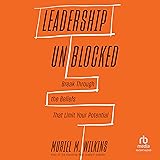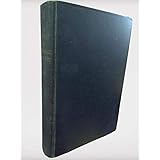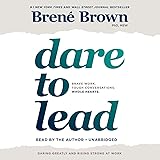Many gold jewelry owners find themselves pondering the true value of their treasured pieces. Is that bracelet in your cabinet truly worth its weight in gold, or is there more to the equation? The video above delves into a critical distinction that clarifies this confusion: the concept of gold karats. Understanding what karat gold means for your jewelry is essential for accurately assessing its purity and, by extension, its market value.
When you hear about the fluctuating price of gold, such as an ounce currently valued at a specific amount, that figure almost always refers to one ounce of pure gold. This precious metal, known as 24 karat gold, represents 99.9% purity. However, as our expert explains, most gold jewelry, particularly in the United States, isn’t crafted from this pure form. Instead, it typically incorporates alloys, which bring us to the different karat designations.
Understanding Gold Karats: The Purity Equation
The term ‘karat’ (often spelled ‘carat’ outside the US, though ‘carat’ also refers to gem weight) is a measure of the purity of gold. Pure gold is incredibly soft and malleable, making it less ideal for everyday wear in jewelry. To enhance its durability, gold is often mixed with other metals like copper, silver, nickel, or zinc, forming an alloy. The karat system quantifies the proportion of pure gold within this alloy.
To begin, let’s break down the common karat percentages you’ll encounter when buying or evaluating gold jewelry:
- 24 Karat Gold (24K): This is considered pure gold, meaning it consists of 99.9% gold. It boasts a rich, deep yellow color but is highly susceptible to scratches and dents, making it less practical for frequently worn items like rings or bracelets.
- 18 Karat Gold (18K): Comprising 75% pure gold and 25% other metals, 18K gold strikes a balance between purity and durability. Its significant gold content offers a beautiful color, while the alloys provide enough strength for most jewelry applications.
- 14 Karat Gold (14K): As highlighted in the video, 14K gold is the most prevalent choice for jewelry in the United States. It contains 58.5% pure gold, with the remaining 41.5% being alloy metals. This blend makes 14K gold exceptionally durable and resistant to daily wear, making it a popular and practical option for various pieces.
- 10 Karat Gold (10K): While not mentioned in the video, 10K gold contains 41.7% pure gold, offering even greater durability and a more affordable price point. It’s often used for everyday items and fashion jewelry.
Understanding these percentages is paramount. When you see a high gold price per ounce, remember that price applies to the 99.9% pure, 24K variety, not necessarily the 14K bracelet in your hand. The presence of other metals directly impacts the overall gold content and, consequently, the intrinsic value of the piece.
Why Not Just Use Pure Gold? The Practicality of Alloys
The allure of pure, 24K gold is undeniable, with its intense yellow hue and undeniable prestige. However, its inherent softness presents significant challenges for jewelry design and wear. A ring made of 24K gold would easily bend, scratch, and lose its shape over time, diminishing its beauty and structural integrity. This is where alloying metals become indispensable.
Next, consider the practical benefits of alloying. By blending gold with metals like copper, silver, nickel, palladium, or zinc, jewelers can significantly increase the metal’s hardness, making it far more resistant to daily impacts and wear. These alloys also play a crucial role in determining the final color of the gold. For instance, increasing the copper content can create rose gold, while silver and palladium contribute to the cool tones of white gold. Each karat level, from 14K to 18K, represents a carefully balanced composition designed to optimize both beauty and longevity for your cherished gold jewelry.
Identifying Your Gold Jewelry: Hallmarks and Markings
So, how can you determine the karat of your gold jewelry? Identifying the purity of your gold usually involves looking for tiny stamps or engravings, known as hallmarks, often located in inconspicuous places on the piece. These markings are internationally recognized and provide vital information about the gold content.
Beyond these, here are common hallmarks you might find:
- 24K: Usually marked as ’24K’, ‘999’, or ‘999.9’. The ‘999’ or ‘999.9’ signifies 99.9% or 99.99% pure gold, reflecting its fineness.
- 22K: Typically marked as ’22K’ or ‘916’/’917′ (indicating 91.6% or 91.7% pure gold).
- 18K: Look for ’18K’, ‘750’, or ’18KP’ (Karat Plumb, meaning exactly 18 parts gold). The ‘750’ denotes 75% pure gold.
- 14K: Commonly marked as ’14K’, ‘585’, or ’14KP’. The ‘585’ indicates 58.5% pure gold content.
- 10K: Found as ’10K’ or ‘417’ (41.7% pure gold).
These marks are often found on the inside of rings, on clasps of necklaces and bracelets, or on the posts of earrings. While these hallmarks are generally reliable, it’s always advisable to have valuable pieces assessed by a professional jeweler for an accurate appraisal, especially if there’s any uncertainty about the markings or the piece’s origin.
Gold Jewelry vs. Gold Bullion: A Crucial Distinction
The video clearly differentiates between gold jewelry and gold bullion, which is a critical point for anyone assessing gold value. When discussions turn to “an ounce of gold” at a specific market price, this almost universally refers to gold bullion—pure gold in the form of coins like Krugerrands, Canadian Gold Maple Leafs, or PAMP Suisse bars and ingots. These items are valued almost entirely based on their precious metal content and weight, often at 99.9% purity or higher.
In addition, gold jewelry, even if it contains a high percentage of gold (like 18K or 22K), carries additional value components beyond its pure metal weight. These include the craftsmanship, design complexity, brand prestige, and any embedded gemstones. Therefore, a piece of gold jewelry, while valuable, will typically not fetch the same price per ounce of its gold content as an equivalent weight of pure gold bullion. The cost of manufacturing, the artistic effort, and the labor involved in creating the piece all contribute to its final retail price, which can make its melt value (the value of its pure gold content) seem comparatively lower.
Global Gold Karats: Cultural Preferences and Usage
Interestingly, gold karat preferences can vary significantly across the globe. As mentioned in the video, some cultures, particularly in regions like India and China, have a strong preference for higher karat gold, often using 22K or even 24K gold in their jewelry. This cultural inclination is rooted in several factors.
Furthermore, in many Eastern cultures, gold jewelry is not only a symbol of wealth and status but also functions as a traditional form of investment and savings. Higher karat gold, being closer to its pure form, is perceived to retain its value more reliably, making it a tangible asset. While 22K gold is still alloyed to provide some durability, its high gold content (91.6% pure gold) makes it highly desirable. These regional preferences highlight the diverse roles gold plays worldwide, transitioning from a mere adornment to a significant economic safeguard.
The ‘Weight’ of Karats: What You Need to Know
The video touches on another intriguing aspect: higher karat gold often feels heavier. This observation holds true for a specific reason. Gold is a very dense metal. When gold is alloyed with other metals to create lower karats (like 14K or 18K), these alloying metals (such as copper or silver) are generally less dense than gold itself. This means that for two pieces of jewelry of identical volume, the higher karat piece, containing a greater proportion of the denser pure gold, will typically have a greater overall mass and therefore feel heavier.
In conclusion, the karat of your gold jewelry is far more than just a number; it is the key to understanding its composition, durability, and intrinsic value. Whether you own a classic 14K chain or an heirloom 22K bracelet, knowing its karat helps you appreciate its true worth and make informed decisions about your precious possessions.











